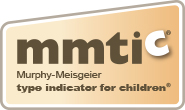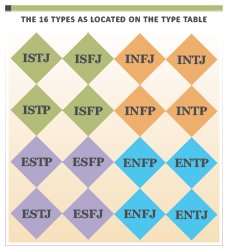Back to School: Personality Type and Learning
Summer is nearing an end, and kids are back at school. By now, school supplies and new clothes have been purchased, registrations for extracurricular activities submitted, classes begun, and daily routines established once again. Now that the basics are handled, how do we best prepare young people for success in learning, studying, and test-taking this school year?
Understanding personalitytype is one way! Type impacts how we learn. We all have a natural style oflearning that feels comfortable—like writing with our preferred hand— which isbased on our personality type preferences. When your child’s learning style isdifferent from their teacher’s teaching style, confusion and frustration mayarise. It can feel like using their non-preferred hand—only for days and days.Imagine what that might feel like! Stress builds, exhaustion takes over, asense of failure looms overhead, and soon they may not like learning at all!
Type awareness teaches your child what their natural strengths are and where they may find learning challenging; these are called their stretches. What if the teacher uses language and creates assignments that call on your child to use their personality stretches? Does that mean the teacher has to teach differently or that your child doesn't have to do the assignment? Not at all. Type is never an excuse for not trying. Instead, it provides your child with an awareness of when they may need to ask for clarification or additional help, knowing that it is a difference in learning styles and not a lack of intelligence.
The MMTIC® StudentReport, available through a certified MMTIC practitioner or our Take the MMTICAssessment service on People Stripes®, offers suggestions for studying, workingwith others, friendships, and working with parents and teachers. It is avaluable resource filled with tips to help your child. I will share a few tipshere so that you can see how type knowledge benefits young people, with a focuson personality type and learning.
- If your child prefers Extraversion, talking out their ideas helps them process their thoughts. Study time with friends can be fun and provide a forum to brainstorm. Even talking out loud by themselves can help them sort through information. Once they have talked through their ideas, they are better able to take time alone to put those ideas together as appropriate to the task.
- Children who prefer Introversion require more time for reflection and quiet to think through their ideas first. They often prefer to study alone. After processing their thoughts on their own, they may enjoy reviewing them with a friend or two. As a teacher, I had tables and individual desks in my classroom to encourage collaboration and reflection. Students could choose where to sit depending on what they needed that day.
- If your child prefers Sensing, they are more likely to notice information that is factual, detailed, and specific. They like information to be presented in order and clearly. When asked to "imagine" something, they are often left bewildered. My son, for example, says all he can see is a "blank screen" when he is asked to imagine an item, situation, or scenario. If details are included in the instructions, he has a much easier time coming up with imaginative ideas, but he needs those details first to get started.
- Young people who prefer Intuition love it when they are asked to imagine something. Off they go on a magic carpet ride! Ideas and images abound, but putting those ideas to practical use or creating the extravagant project they've developed in their imagination may prove more challenging. It is important that they have time to come up with multiple possibilities; once they have done that, they can start putting together the details to bring their ideas to fruition.
- A child who prefers Thinking is up for a challenge and enjoys a good debate. They value competence in themselves and in others. They may question the teacher and their peers, not to be impertinent but so they can really understand the material. Unless they trust the skills of their classmates, working independently is preferred over group work. Decisions are made logically and objectively. Often direct when giving feedback, sometimes people can take things the wrong way.
- If your child has a Feeling preference, they like harmony. They want people to get along and work together in cooperative ways. Often, they are the helpers in the class, with friends and teachers. Supportive and positive feedback is appreciated. Decisions are often based on personal values and their impact on people. Fear of hurting someone's feelings or being disliked can cause them to talk around an issue rather than speak to it directly, which can be aggravating to some people.
- Young people who prefer Judging like knowing what is coming next. They often have planners and use them! Rather than wait until the last minute, they like to get started on projects and homework early to prevent last-minute stress and pressure as the due date approaches. With homework out of the way, they can relax and enjoy time with friends.
- If your child prefers Perceiving, know that their best work is often produced at the last minute. They like surprises and are always up for a change in routine. Keeping options open and having fun is important to them. Work and fun go hand in hand. They find they are more efficient when learning is fun. When younger, they may need guidance on time management so that they don't wait too long before starting their assignments.
The MMTIC Student Report is available to students in grades two through twelve. We also have an MMTIC Test Preparation Report, which is available to grades nine through twelve. This report covers testing strengths, testing challenges, test preparation style, and study suggestions that work best for your personality type. Please contactTaketheMMTIC@peoplestripes.org for more information on how to get the Test Preparation Report.
Help your child succeed this school year; sign them up to Take the MMTIC Assessment today! Have an exceptional 2023-2024 school year!



_thumb.png)





.png)
















.png)


_thumb.png)
.png)
_thumb.png)
_thumb.png)
.png)

.png)
.png)


